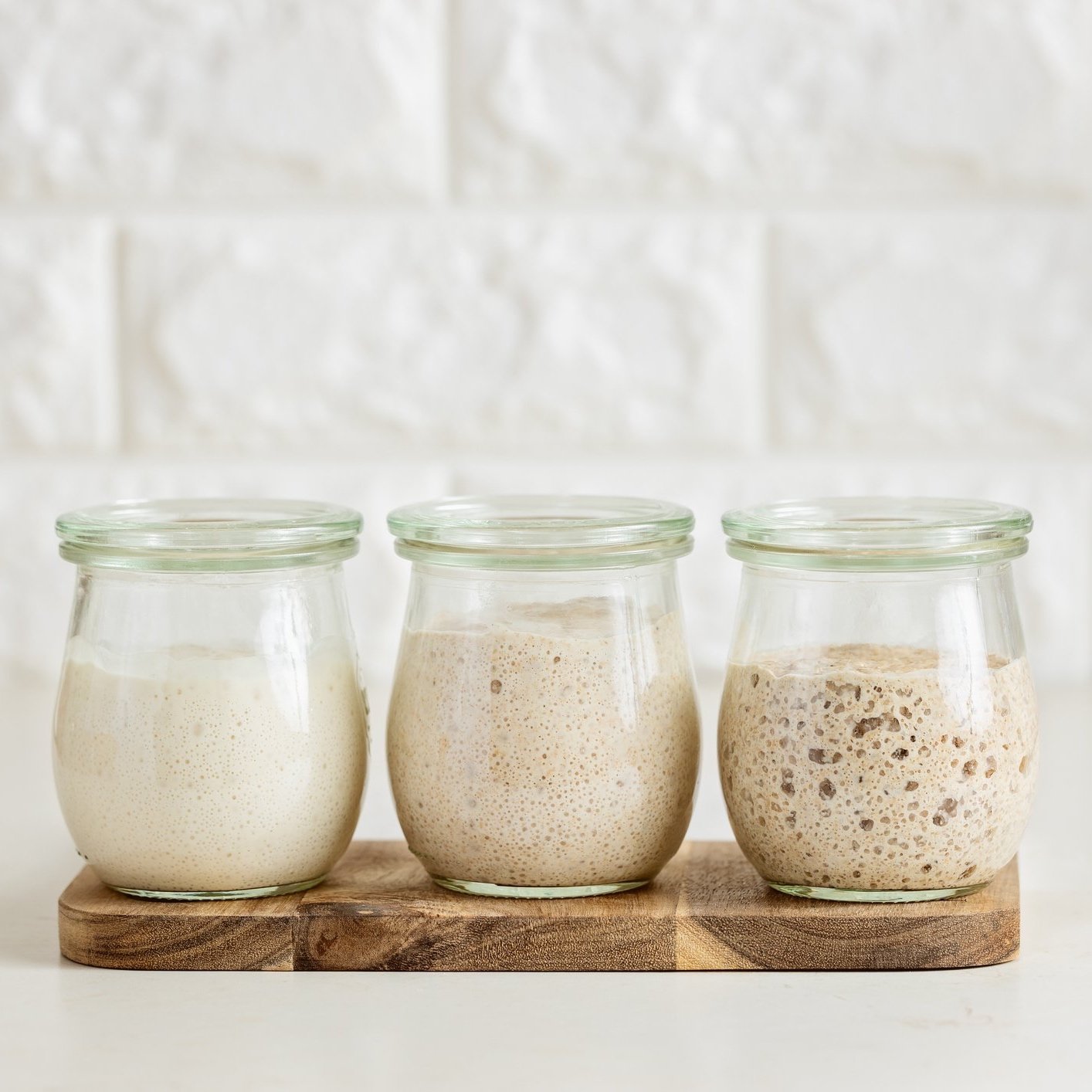Sourdough Myths Debunked: What Actually Matters
Apr 15 | Written By Sabrina Huizar
If you’ve ever dipped a toe into the sourdough world (or gone headfirst into a 2 a.m. Reddit thread), you know there’s a lot of advice out there. Some of it is solid. Some of it is… a bit overhyped. And some of it? Pure sourdough folklore.
So let’s bust a few myths and highlight what actually matters when it comes to baking great sourdough at home.
Myth #1: You Must Feed Your Starter at the Same Time Every Day
The Truth: Starters don’t wear watches. While consistency is helpful, you don’t need to feed at the exact same hour daily. Life happens. Your starter won’t die if you’re a few hours late or even if you skip a day (especially if it lives in the fridge).
What matters: Feed it when it’s hungry (you’ll learn the signs), and keep the temperature relatively stable.
Myth #2: Your Starter Must Be Super Bubbly to Bake
The Truth: Bubbles are a sign of activity, but they’re not the only measure. A starter can be wildly bubbly and past its peak. Sourdough can be made with hungry starter. There really is no such thing as sourdough discard past activation. Once your starter is fully active discard doesn’t exist. Just hungry starter.
What matters: Fully activated and mature sourdough starter.
Myth #3: You Need Fancy Flour to Make Great Sourdough
The Truth: Bread flour is helpful. Rye and whole wheat add depth. But great bread can come from basic, unbleached all-purpose flour. You don’t need imported stone-milled heirloom grain to bake something delicious.
What matters: Knowing your flour’s protein content and hydrating your dough accordingly.
Myth #4: Sourdough Must Be Super Tangy to Be “Authentic”
The Truth: Tanginess is a flavor option, not a requirement. In fact, many artisan loaves are only mildly sour. Long, cold fermentation usually enhances that sour flavor, but it’s not the defining characteristic of a good sourdough.
What matters: Balanced fermentation, good crust, and an open crumb, flavor is flexible.
Myth #5: You Have to Knead (or Stretch and Fold) Like a Pro
The Truth: While gluten development is key, there are many ways to get there. You don’t need an intense kneading schedule or a perfectly timed coil fold. Even a no-knead method can produce amazing bread, thanks to time and fermentation.
What matters: Some gluten development + patient fermentation = beautiful results.
Myth #6: If Your Loaf Isn’t Instagram-Perfect, You Failed
The Truth: Some of the best-tasting sourdough loaves are wildly “ugly”, flat, torn, or oddly shaped. Sourdough isn’t about perfection. It’s about flavor, texture, and the joy of baking something alive and real.
What matters: How it tastes, how it feels, and whether you had fun baking it.
The Bottom Line
Sourdough doesn’t have to be complicated, rigid, or intimidating. The heart of it is simple: flour, water, salt, and time. Learn a few key principles, listen to your dough, and ignore the noise. You’re doing just fine.
Stay tuned—and stay cultured.
Swedish Rye Sourdough Starter Culture
from $15.00


